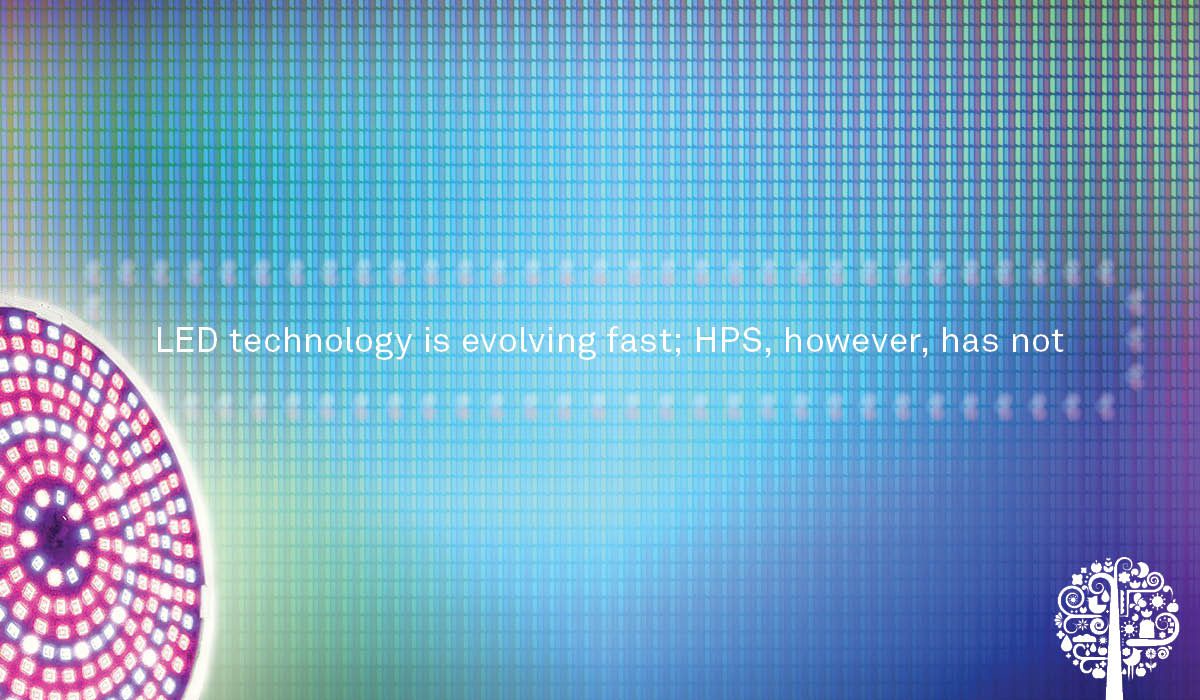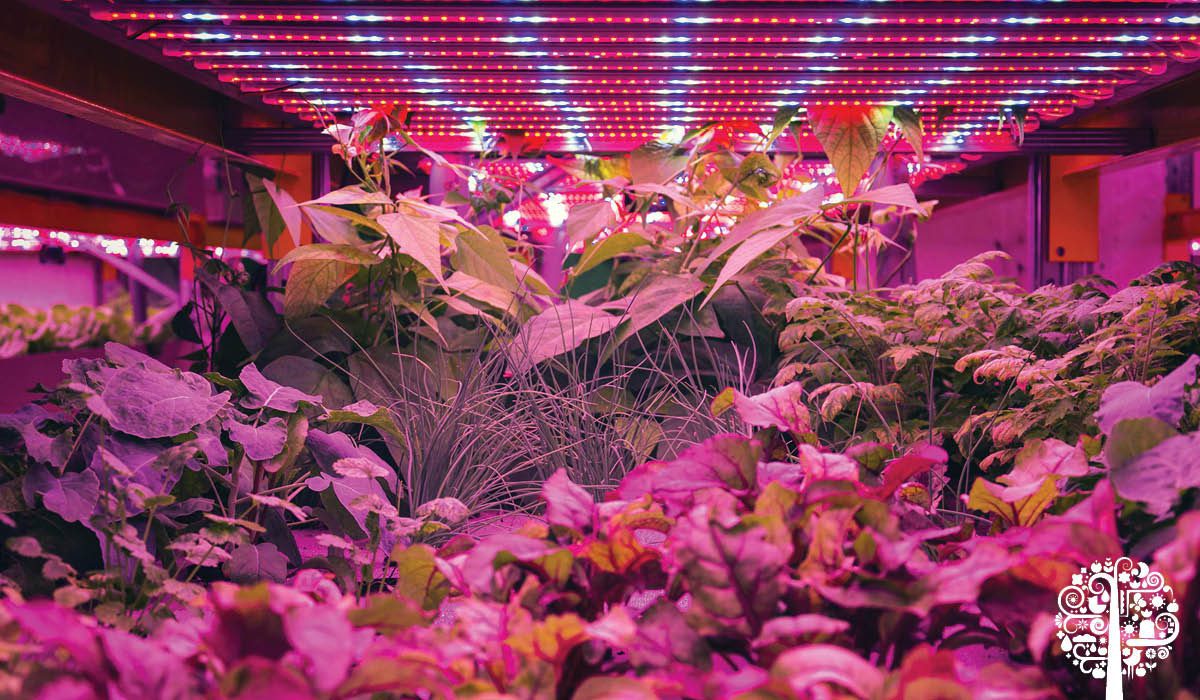My first memories of Light Emitting Diodes are the HAM radio kit from RadioShack I put together in the third grade, the little indicators next to the quarter slot on an arcade game, and the red light on the Gameboy that became an instinctual indicator of battery life. Now, I can’t see an LED without trying to guess its wavelength within 10 nanometers.
Working in the Bio-Refinery labs on the south campus of the University of Georgia, I worked with a team using different inputs to elicit oil production out of slime. Mounted in a cuvette, we hit these microscopic plant ancestors with blue(450nm), green (535nm) and red (660nm) light to see differing rates of O2 production as a result of increased photosynthetic activity. Sure enough, there was a correlation, especially with the blue and red wavelengths. At this time, I had learned about the McRee Curve in my physiology class but was not yet obsessed with it. The combination of the electricity and chemistry of these monochromatic chips serendipitously lines up with the photoreaction centers that turn CO2, water and light into plant biomass.
This not-so-novel part of the many oddball studies I helped facilitate would turn out to become a critical inflection point to the core of my career. Prodding plants with differing wavelengths and combinations of light to optimize oil production has become commonplace in the cultivation of medicinal plants. After moving to Denver in 2010, learning to grow hydro indoors, and becoming a part-time ski bum, I found myself in a full circle conversation with old colleagues interested in cultivating plants with LED-based technology.
How It All Began
Having spent a few years in the mountains skiing like a fiend and growing veggies in a postcard at over 8000 ft, I fired up my first COB (Chip on Board) prototype next to a trusty old single-ended HPS. The LED was 900 watts, using (by today’s standards) very inefficient chips in a modified Raptor hood and forcing air over all the hot drivers and heatsinks. After almost burning down my beautiful house in Aurora, CO (by pulling ten thousand watts through aluminum wiring), I kept most experiments relatively small and science-minded. This first trial proved two things: it is possible to grow decent plants under LED, and I didn’t know much about the nuance of parameter controls needed to get the most out of an LED garden. There was no VPD management, dry-backs or nutritional modification, only raw power on the canopy. Proof of principle.
Ever Heard of Blurple?
Before the full spectrum LED lights that are now available across the globe, there was “blurple”. Red and blue chips were the most efficient vehicles of Photosynthetically Active Radiation (PAR). Red, being more efficient as a longer wavelength, can deliver more plant usable energy per joule or watt from the wall. PAR is measured in micromoles. Today, the efficacy (efficiency) of a horticulture lighting system is usually measured in umol/J. Serious indoor garden enthusiasts have been tracking the progression from ~2.0 for HPS to 3.5+ for LED. For a deep dive on this, check out my buddy Chris Sloper’s The LED Grow Book Version 3 . Or wait to see if I get the opportunity to bore this audience with minutia and tech talk.

The most common formulation for full-spectrum is some variation of white LEDs with a high Color Rendering Index(CRI), some 660nm red chips to drive that photosystem and boost specs due to their ever-growing efficacy. White chips are approaching their theoretical maximums for efficiency, but scientists keep turning over rocks and finding a little more output and durability. We have a pretty solid understanding of the importance of Far Red and clues regarding UV that fall just outside of the PAR range (400-700nm) and their effect on plants.
It is essential to understand that all white LEDs are actually blue (typically 450nm, but emerging tech is moving that mark) chips with a unique phosphor coating. This takes the dense energy emitted from that wavelength range and diffuses it to lower energy forms down the line, from green to yellow to red and tailing out into far-red. This shift is due to the chemical composition and thickness of the coating over the blue-chip base. As a result, the bluer white chips (6500K) are inherently more efficient than 3000K. Look up Kelvin temps or read your LED screw-in residential lamp boxes for this visual reference.
The LED Evolution
LED PAR Wars have been raging on social media since they first hit the market. Misleading marketing and lies historically made many growers weary of making the change. Ten years ago, there was no 600W LED that could replace a 600W HPS. LED technology is evolving fast; HPS, however, has not. That old claim which once seemed like a fairytale is now the truth. But the differences between these lighting technologies expand far beyond efficiency.

Growers must consider the Emerson Effect, UV, secondary metabolites, and how Ag-funded tech innovation drives food security. Spectral tuning, A.I., automation, and optics are also factors to think about. We also can’t forget about package-less surface mount chip technology, the delivery of specific wavelengths of light, and how plants perceive different combinations like we perceive pitches of sound.
My Affliction
I’ve been invited to write here as myself and as the owner of my firm, Sustainable Terrains, which I founded in 2014 to house my consulting efforts in agriculture and hort tech. My first love is food, grown in the dirt under the sun. My LED affliction has, at times, left me broke and living in a camper, running from the next startup trying to engineer their way to market or trying to pimp me for the knowledge I’ve gained.
Still, I cannot walk through an airport, concert, parking structure, or holiday light installation without estimating the wavelength or combination of wavelengths that produce a color or temperature of light. I know we are just at the beginning of this exciting paradigm shift in technology and unlocking the potential of plants as a result.